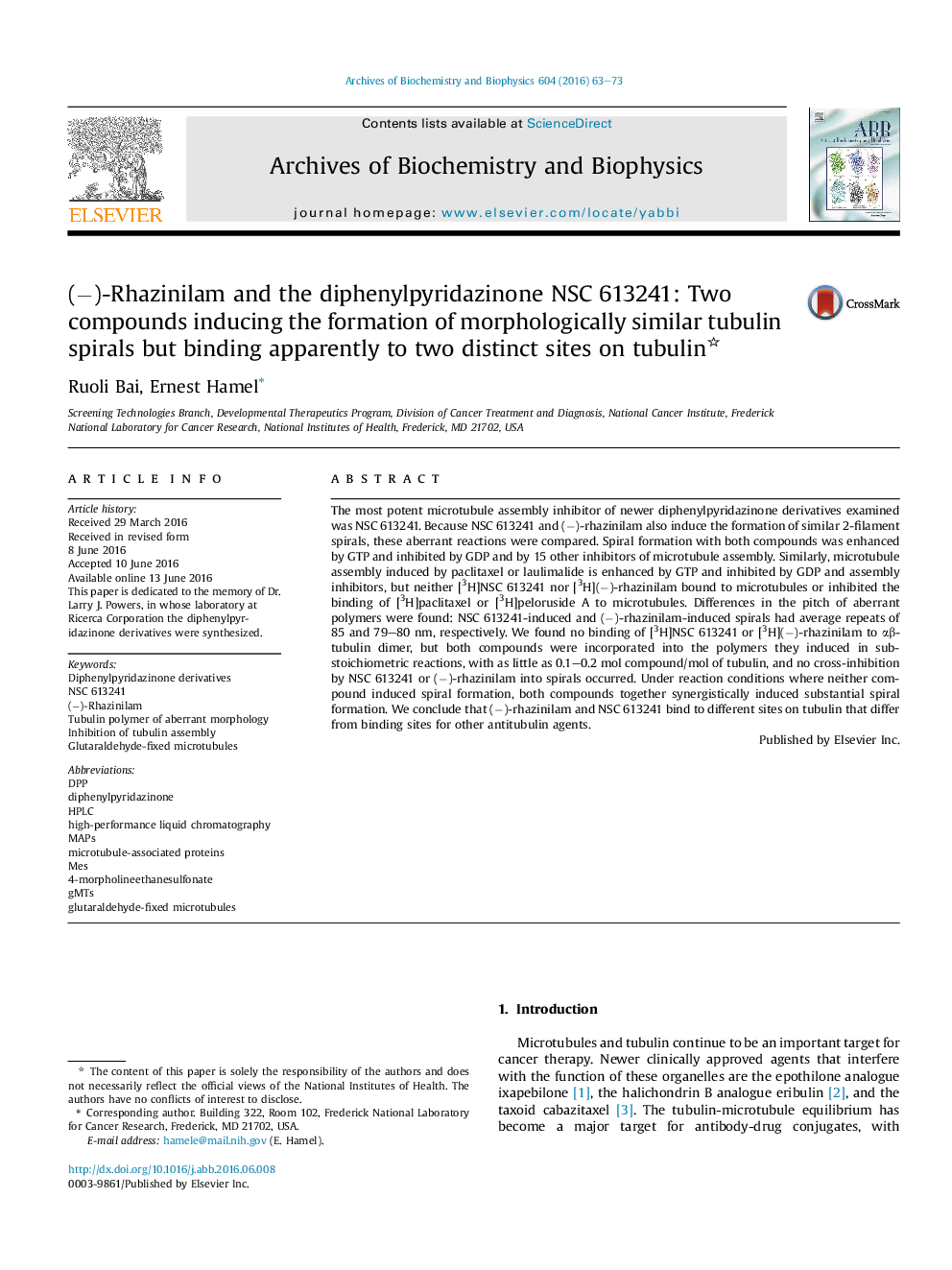| Article ID | Journal | Published Year | Pages | File Type |
|---|---|---|---|---|
| 8289129 | Archives of Biochemistry and Biophysics | 2016 | 11 Pages |
Abstract
The most potent microtubule assembly inhibitor of newer diphenylpyridazinone derivatives examined was NSC 613241. Because NSC 613241 and (â)-rhazinilam also induce the formation of similar 2-filament spirals, these aberrant reactions were compared. Spiral formation with both compounds was enhanced by GTP and inhibited by GDP and by 15 other inhibitors of microtubule assembly. Similarly, microtubule assembly induced by paclitaxel or laulimalide is enhanced by GTP and inhibited by GDP and assembly inhibitors, but neither [3H]NSC 613241 nor [3H](â)-rhazinilam bound to microtubules or inhibited the binding of [3H]paclitaxel or [3H]peloruside A to microtubules. Differences in the pitch of aberrant polymers were found: NSC 613241-induced and (â)-rhazinilam-induced spirals had average repeats of 85 and 79-80 nm, respectively. We found no binding of [3H]NSC 613241 or [3H](â)-rhazinilam to αβ-tubulin dimer, but both compounds were incorporated into the polymers they induced in substoichiometric reactions, with as little as 0.1-0.2 mol compound/mol of tubulin, and no cross-inhibition by NSC 613241 or (â)-rhazinilam into spirals occurred. Under reaction conditions where neither compound induced spiral formation, both compounds together synergistically induced substantial spiral formation. We conclude that (â)-rhazinilam and NSC 613241 bind to different sites on tubulin that differ from binding sites for other antitubulin agents.
Related Topics
Life Sciences
Biochemistry, Genetics and Molecular Biology
Biochemistry
Authors
Ruoli Bai, Ernest Hamel,
